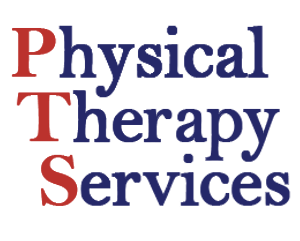You can use physical therapy to find relief from herniated disc pain.
Are you dealing with unexplained back pain? The reason for your discomfort could be a herniated disc. Disc herniations are common among our patients with back, arm, and/or leg discomfort at our physical therapy center. A herniated disc can occur anywhere in your spine!
Strange neck pains, back pains, or extremities symptoms can suggest a multitude of issues, including a herniated disc or several herniated discs.
So, what can you do if you’re not sure if you have this problem? What are your options if you have a herniated disc? These questions don’t have to add to your physical pain and confusion!
If you believe a herniated disc causes your pain and dysfunction, we encourage you to contact Physical Therapy Services today to schedule an appointment with a physical therapist.
What is a herniated disc?
You might have heard herniated discs referred to as “slipped discs” or “ruptured discs.” Regardless of what they’re called, all of these names describe the same problem!
Your spinal discs are squat discs of tissue that lie between the vertebrae. They are small soft structures whose main jobs are to absorb shock and maximize mobility within the spine. On the outside, these discs are tough and fibrous, but on the inside, they are soft and gel-like.
Their fluid-filled center, called the nucleus pulposus, is encased in an outer structure called the annulus fibrosus. This arrangement makes the disc both tough enough and spongy enough to absorb shocks.
Unfortunately, that toughness has its limits. Sometimes a disc will lose hydration over time, causing the nucleus pulposus to shrink. The disc loses its height, which stresses the spinal joints and may cause the disc to bulge outward.
Eventually, these changes can cause part of the annulus fibrosus to balloon and tear open; this is a herniated disc. Herniated discs can also occur suddenly due to an auto accident, workplace accident, or sports injury that traumatizes the spine
Symptoms of herniated discs
A herniated disc occurs when the tough outer layer of the disc (the annulus fibrosis) ruptures. This allows the inner gel substance (the nucleus pulposus) to leak out. The ruptured disc tissue can trigger an inflammatory response and compress nearby structures, including joint receptors and spinal nerve roots.
Surprisingly, not all ruptured discs produce discomfort (especially because the discs themselves are relatively low in innervation and vascularization). When a herniated disc does create symptoms, the following are common ones:
- Neck or back pain, stiffness, and muscle spasms at the level of the injured disc
- Arm or leg pain, numbness, tingling, and weakness (if the herniated disc compresses on an adjacent nerve root that innervates the affected limb)
- Pain that improves or “centralizes” (moves toward the spine) with spinal extensions, such as when lying down or lying prone
- Pain that worsens with forward flexion or prolonged sitting—forward flexion may also cause the pain to “peripheralized” or move further away from the spine
A herniated disc is similar to a bulging disc; in the latter condition, the disc tissue may protrude out of place but will not rupture.
In addition to analyzing your symptoms and performing various tests and measures, a physical therapist can help you determine if you have a herniated disc by assessing your medical history and lifestyle.
We’ll look for risk factors known to be linked to herniated discs, including:
- Acute trauma, e.g., auto accident or fall
- Smoking
- Obesity
- Male gender
- Age between 30 and 50
- Frequent bending, heavy lifting, or twisting
- Physically demanding occupation
How can physical therapy help with herniated disc pain?
Research shows that physical therapy is effective for treating herniated discs. If your symptoms are affecting your activities of daily life or work, or if your symptoms persist for longer than two weeks, we recommend consulting with a physical therapist.
Physical therapy interventions like spinal traction, corrective exercises, and non-invasive modalities like electrical stimulation or diathermy can heal the injured disc, alleviate pain, and help you avoid recurring issues.
Physical therapy may also be indicated if you’ve been told by a surgeon that you could need spinal surgery to fix the herniation.
Before undergoing a spinal fusion or disc decompression treatment, many surgeons advise their patients to work with physical therapy to increase core strength and spinal health. This can improve surgical outcomes while lowering the risk of post-operative complications.
Surprisingly, studies suggest that even “idiopathic” back pain (pain that has no identified etiology) responds well to physical therapy. In other words, even if you’re not sure if you have a herniated disc, our services can still be beneficial.
Request your first appointment today
Struggling with the pain of a herniated disc can be excruciatingly difficult. Consult with a physical therapist today to get started on the path toward pain relief! Our experienced team can help you understand the source of your symptoms and heal the injured disc so your relief is longer-lasting.
Sources:
Tags: health and wellness, Herniated disc, Natural Treatment, Physical therapist, Physical Therapy



